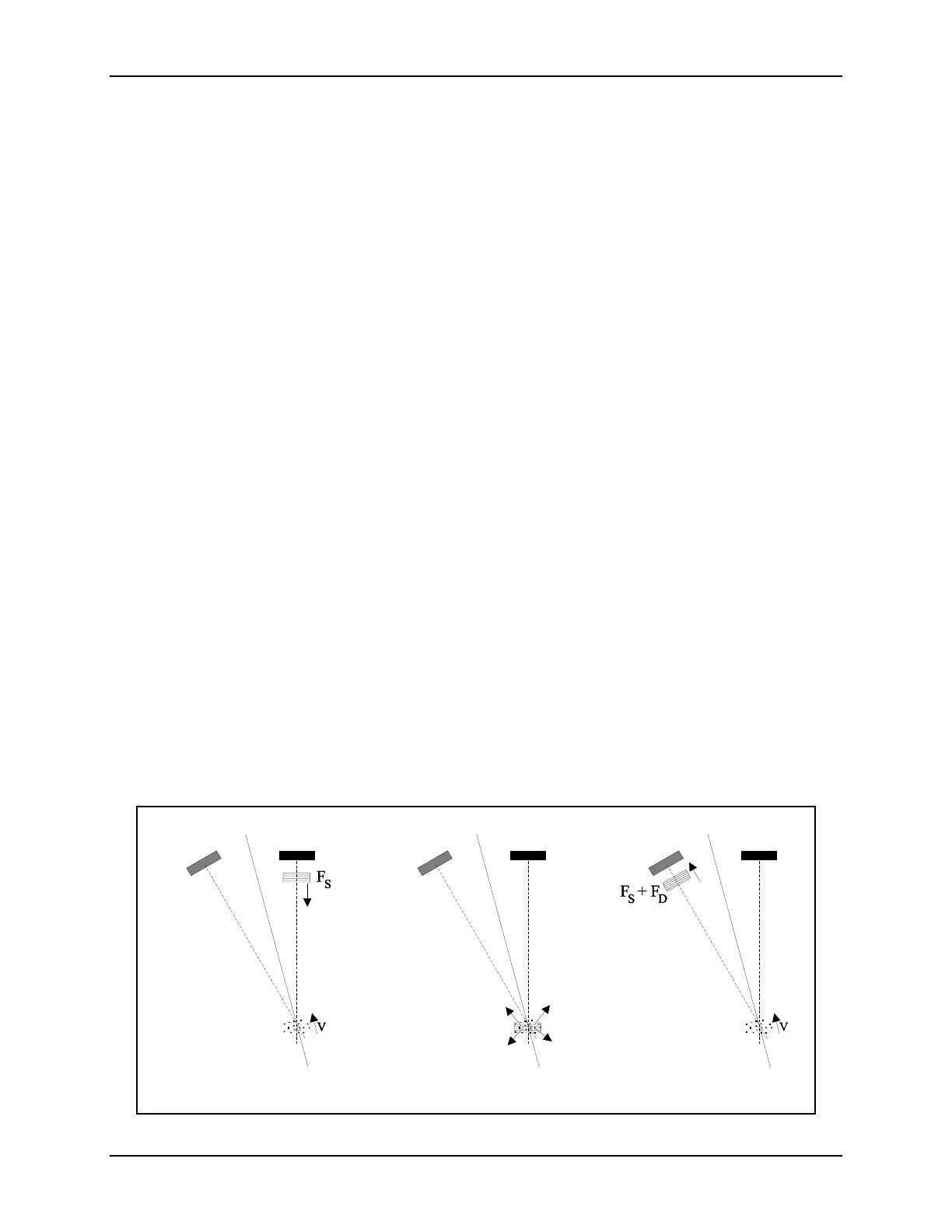SonTek/YSI
Acoustic Doppler Velocimeter Principles of Operation (September 1, 2001)
1
1. Introduction
The SonTek/YSI Acoustic Doppler Velocimeter (ADV) is a single-point, high-resolution, 3D
Doppler current meter. The Doppler processing techniques used by the ADV provide several ad-
vantages: accurate, fast, 3D velocity measurements in a remote sampling volume; invariant fac-
tory calibration - no periodic calibration required; simple operation; direct calculation of turbu-
lent parameters such as Reynolds stress; and excellent low-flow performance.
This document presents the basic operating principles and specifications of the SonTek ADV. It
does not attempt to provide a detailed discussion of all technical issues, nor does it provide a de-
tailed description of ADV operation. To learn more about specific ADV configurations and ap-
plications, please contact SonTek.
2. The Doppler Shift and Bistatic Current Meters
The ADV measures the velocity of water using a physical principle called the Doppler effect. If a
source of sound is moving relative to the receiver, the frequency of the sound at the receiver is
shifted from the transmit frequency by the amount:
F
doppler
= -F
source
( V / C )
where
F
doppler
= change in received frequency (Doppler shift)
F
source
= frequency of transmitted sound
V = velocity of source relative to receiver
C = speed of sound
The velocity V represents the relative speed between source and receiver (i.e., motion that
changes the distance between the two). Motion perpendicular to the line connecting source and
receiver does not introduce a Doppler shift. If the distance between the two objects is decreasing,
frequency increases; if the distance is increasing, frequency decreases.
Figure 1 – Basic Operation of a Bistatic Doppler Current Meter
Bistatic
Axis
Acoustic
Transmitter
Acoustic
Receiver
Bistati
Axis
Acoustic
Transmitter
Acoustic
Receiver
Bistatic
Axis
Acoustic
Transmitter
Acoustic
Receiver

